Matador Network's Blog, page 758
October 27, 2020
Snowmobiling in Yellowstone Country
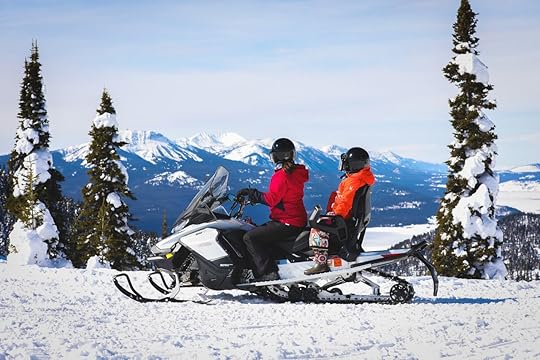
Nothing isn’t epic in Yellowstone Country Montana — especially come winter. The powder accumulates high and fast, blanketing some of the world’s most beautiful landscapes in a single shade of white from November to April. A thousand miles of snowmobiling trails crisscross the region, from the streets of small towns to deep into the untamed national forests.
While most visitors probably think Yellowstone Country closes down come winter, for those in the know, the world opens up. As long as you’re Montana Aware — that is, socially distancing and always packing a mask — you’re invited to start carving through these endless pools of powder. Here’s how to make it happen.
A thousand miles of options
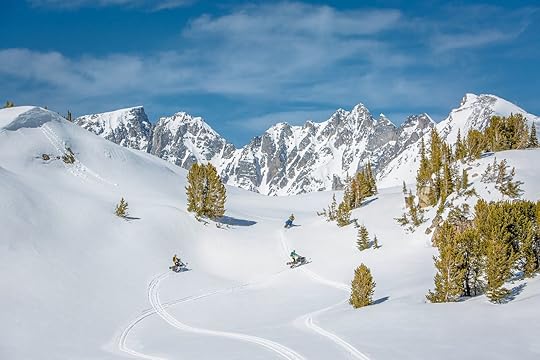
Cooke City. Photo: Dan Armstrong
Where Yellowstone National Park ends — near Montana’s southwestern border with Wyoming — the fun begins. Above the park boundary, the unreal landscapes are the same, but the crowds are long gone. Here’s how the map looks for snowmobilers:
West Yellowstone — the town sitting at the national park’s west entrance — is one of the world’s best snowmobiling destinations, bar none. There are 400 miles of groomed trails here alone, and it’s also the place to nab a warm morning espresso, a post-sled drink, or chat up in-the-know pros. Two Top Loop, Horse Butte Loop, and Madison Arm Loop are three local-favorite routes to check out.
Then there’s Big Sky, the town that’s best known for the ski resort of the same name — naturally, there are some pretty unparalleled snowmobiling trails here, too. The Big Sky Snowmobile Trail runs for 123 miles, easily broken up into sections suitable for different skill levels.
Are you counting? You’ll find more than 350 miles of groomed snowmobile trails in the Gallatin National Forest, near — and a few in! — Bozeman. Fairy Lake Trail may only be six miles long, but it’s scenic enough that it’s a crowd favorite; Olson Creek’s 24 miles offer incredible mountain views, too. Bozeman’s a college town, remember, meaning a post-ride craft beer is a short jaunt away.
Not done yet. More experienced snowmobilers may be drawn to the area south of Bozeman, in the rugged Beartooth, Absaroka, and Crazy Mountains. Both Shields River/Smith Creek and Ibex/Cottonwood Trails have Forest Service cabins available for rent, making it easy to spend a weekend deep in the untracked wilderness.
Last but certainly not least is Cooke City, where the season can run into June (and sometimes, believe it or not, July). Head here in late spring and hit the midday, backcountry powder in nothing but a t-shirt, climbing Daisy Pass at 11,600 feet, free-riding Henderson Mountain, or hitting any of the area’s 60 miles of trails. Back in town, you won’t find much (population: 140), but the Miners Saloon will take care of you.
What — and who — to know
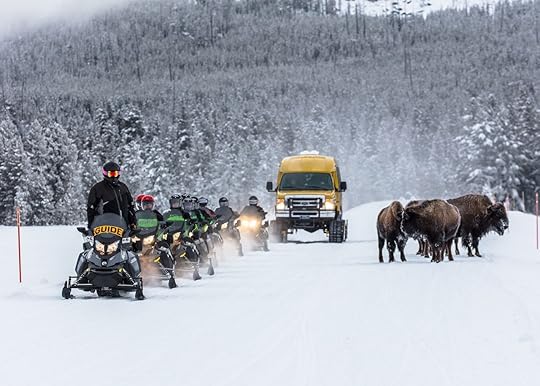
Yellowstone National Park. Photo: NPS / Jacob W. Frank
Couldn’t fit your snowmobile in the overhead compartment? You’ll need a solid outfitter to get you geared up. Options abound in Yellowstone Country, but here are a few suggestions:
Ace Powder Guides, West Yellowstone – Ace is a solid option if you’re looking for the backcountry hookup. They’ll get you going in the Gallatin, Caribou, and Beaverhead-Deerlodge National Forests.
Alpine Adventures, Big Sky area – The folks at Alpine Adventures are great with families, also offering tubing and snowshoeing rentals and lessons.
All Yellowstone Sports, West Yellowstone – Not just snowmobiles here — heated snowcoaches, too. If you’re looking for a super unique way to explore the national park in winter, this one’s for you.
Any outfitter will teach you good snowmobiling protocol, but the musts go a little something like this:
Check the Montana avalanche report before you head out. If you’re not on a guided tour, be sure to procure a transceiver with your sled.
Use common sense: Ride on the right, use hand signals, stay sober, respect the wildlife, and only ride as fast as your skillset allows.
Certain trails are often irregularly maintained by local clubs and volunteers. Ask about — and research — trail conditions when you’re making a plan.
Out-of-state visitors will need a Nonresident Temporary Use Permit. They’re $35 and can be obtained through the Montana Fish, Wildlife & Parks Department.
Recommended rides and routes

West Yellowstone. Photo: Yellowstone Country Montana
Don’t hesitate to ask locals and outfitters for their recommendations — everyone will have an opinion! Here are ours:
Newbies in West Yellowstone should beeline it to the Madison Arm Loop. It’s relaxing and gentle, 20 miles long, and skirts the Madison side of Hebgen Lake. You’ll get great views and many, many chances to spot wildlife. Still in the West Yellowstone area, the more advanced should consider the Lionhead Trail, a short-and-steep, heart-thumping 16 miles of backcountry bliss along the Continental Divide.
In the Big Sky area, a Forest Service cabin sits at Yellow Mule Divide, near the beginner-friendly Doe Creek/Buck Ridge Trail. Those with more experience under their belt may want to tackle sections of the lengthy Big Sky Snowmobile Trail.
Plenty of outfitters also offer snowmobile tours through the national park. Few visitors get a chance to experience Yellowstone behind the scenes like this, especially come winter. Outfitters can also hook you up with multi-day packages (that take care of hotel bookings) and private or large-group tours, customize a trip to your skill level and needs, or simply help narrow down your options for you. You probably won’t be able to see it all while you’re here, but you’ll probably wish you could. 
The post Snowmobiling Yellowstone Country Montana: Everything you need to know appeared first on Matador Network.

Coral reef the size of a skyscraper
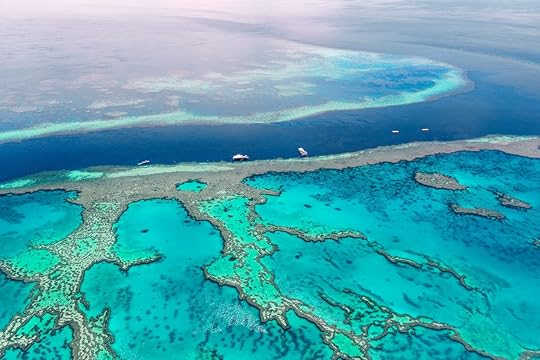
Although life isn’t great these days for the Great Barrier Reef thanks to global warming, a brand new reef has just been discovered that’s taller than the Empire State Building. On October 20 scientists discovered the detached reef in the waters off North Queensland while aboard the Falkor research vessel. It’s the first such discovery in over 120 years.

Photo: Schmidt Ocean Institute
The reef is 1,640 feet tall, making it taller than the Empire State Building, Sydney Tower, and Petronas Twin Towers, though you wouldn’t be able to appreciate its enormity unless you dove underwater. It measures about one mile wide and rises to its shallowest depth of about 131 feet below the ocean surface. The team of scientists used an underwater robot named SuBastian to explore the reef and livestream footage.
Wendy Schmidt, the co-founder of the Schmidt Ocean Institute, said in a statement, “This unexpected discovery affirms that we continue to find unknown structures and new species in our ocean. The state of our knowledge about what’s in the ocean has long been so limited. Thanks to new technologies that work as our eyes, ears and hands in the deep ocean, we have the capacity to explore like never before. New oceanscapes are opening to us, revealing the ecosystems and diverse life forms that share the planet with us.” 
More like thisArt + ArchitecturePerth is Australia’s most underrated city for art lovers
The post A huge coral reef taller than the Empire State Building was found in Australia appeared first on Matador Network.

Work-from-home Marriott hotel passes

Millions of Americans have gotten used to the work-from-home lifestyle the past few months. So used to it, in fact, that it’s probably become pretty monotonous. Marriott International just announced a new program designed for remote workers, allowing work-from-homers to work from various hotel properties.
Marriott Bonvoy’s new Day pass, Stay Pass, and Play Pass packages allow guests to take advantage of a range of options. The Day Pass gives you a hotel room for the day, from 6 AM until 6 PM. The Stay Pass allows for a 6 AM check-in, overnight stay, and 6 PM departure the following day. This pass includes hotel amenities like the gym and pool. The Play Pass, available in luxury and resort locations worldwide, grants guests a business concierge, child supervision, dedicated office spaces, and curated experiences. More details about the various pass options are available online.
Stephannie Linnartz, Marriott’s Group President of Consumer Operations, Technology & Emerging Businesses, said in a statement: “Working remotely doesn’t necessarily have to mean working from home, where blurred lines between personal and professional lives can create distractions and stress. We are inviting guests to work anywhere with Marriott Bonvoy to help them be more productive and achieve a better work/life balance by reimagining our hotel rooms as local remote workspaces for our customers. By providing flexible booking options, our loyalty members and guests have a familiar alternative when choosing where to work.”
According to Marriott’s research, people may consider working from a hotel guest room to better break up the work-from-home monotony, have a dedicated workspace, create boundaries between work and personal life, and have a space to focus. 
More like thisLifestylePro tips for working from home, from the Matador staff who do it year-round
The post Marriott is taking work-from-home to the next level with hotel day passes appeared first on Matador Network.

Sweet potatoes with marshmallows

Sweet potato casserole with a generous topper of marshmallows graces countless Thanksgiving tables across America. The combination is a classic — and frequently enjoyed — pairing of sweet on sweet that you’re bound to find regardless of where your holiday travels take you in the United States.
It’s not, however, the original way the country preferred to prepare its sweet potatoes. For centuries, early Americans preferred their sweet potatoes prepared without an extra sugary addition. The marshmallow top became the classic preparation in the most American way: A company with smart marketing sold us on it.
In the 1870s, German brothers Frederick and Louis Rueckheim moved to America. They invested their savings into a confectionery business and made a name for themselves 20 years later with a little brand of sweet popcorn you might have heard of called Cracker Jacks. The product quickly took off, but it was far from the only sweet treat the brothers hung their hat on. Their second best-seller, Angelus Marshmallows, which debuted in 1907, changed the Thanksgiving table just as much as Cracker Jacks changed every visit to the ballpark.
Angelus Marshmallows were some of the first widely available commercial marshmallows. To encourage more people to buy them, the company turned to product placement. According to Saveur, Angelus Marshmallows hired the founder of Boston Cooking School Magazine, Janet McKenzie Hill, in 1917 to come up with a book of marshmallow recipes “to encourage home cooks to embrace the candy as an everyday ingredient.” Among the recipes that Hill incorporated marshmallows into was sweet potato casserole.
Americans were already familiar with sweet potatoes when the recipe book made its way onto the shelves of home cooks. Documents from the Library of Congress found the first recipe related to sweet potato casserole was in “American Cookery” by Amelia Simmons, which is considered the country’s first cookbook and was published in 1789. The recipe for what was dubbed potato pudding had sweet potatoes, milk, nutmeg, and egg whites.
The preference for even sweeter sweet potato recipes grew over time in American kitchens. Candied sweet potatoes solidified their place in the canon of American cooking in 1893 with Fannie Farmer’s Boston Cooking School Cookbook. The Library of Congress also notes that George Washington Carver published two different ways to make candied sweet potatoes in his collection of more than 100 sweet potato recipes.
Regardless of how they were prepared — candied or left to their natural sweetness — sweet potatoes were officially a traditional Thanksgiving dish in the 1800s, as evidenced by their place as side dish suggestions in books like the Boston Cooking School Cookbook and Godey’s Lady’s Book from 1887.
With that type of history, you’d be forgiven for assuming that throwing candy into the sweet potato mix was universally embraced right off the bat. But, outside of the northern sphere of influence that those from the Boston Cooking School held, marshmallows were initially considered too much sweetness. Saveur notes that Southerners “appeared to respect sweet potatoes too much to pair them with candy,” while Northerners “embraced marshmallows as the latest innovation.”
Today, the regional line between how the North and South prepare their sweet potatoes has generally faded. The blog Deep South Dish calls a topping of mini marshmallows “simply traditional” and “the way we usually roll Down South.” In the Northeast, marshmallow preference stayed strong through the 1970s and beyond with recipes like the “New England Yam Bake” topped with peaches and marshmallows.
Some modern recipes forgo the marshmallows to highlight the natural sweetness of the root vegetable. Still, sweet potato casserole with marshmallows on top remains an American classic that has nearly as much a guaranteed place on the Thanksgiving table as pumpkin pie. 
More like thisFood + DrinkWhy the saying should be ‘as American as pumpkin pie,’ not apple
The post How marshmallow-topped sweet potatoes became an American classic appeared first on Matador Network.

Sacred aboriginal tree cut down
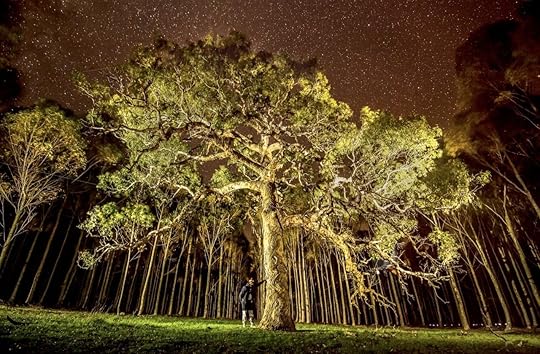
The government of Victoria, Australia, isn’t making any new friends this week. Widespread outrage was sparked after it cut down a tree that was culturally significant to Australia’s Indigenous Djab Wurrung women. The yellow box tree was known as a “directions tree,” and was cut down on Monday to make room for a highway. According to the government, the tree was not listed as requiring protection.
Crowds of protesters have descended on the site, and police have made over 50 arrests. Among those arrested were two legal observers, who showed up to ensure police complied with the law, as well as several Aboriginal land protectors.
The Guardian reported that one of the legal observers stated that the police “started making really violent arrests, grabbing people by the head; four cops on top of one person. It then stopped for a bit, while they were deciding on who to arrest next…They then came up to me and told me I would be arrested if I didn’t move on. I agreed to move on. They then arrested me immediately despite my compliance.”
A police spokesperson said the officers were just protecting contractors working at the site, and that many protesters refused to vacate a restricted access area.
A local, Sissy Austin, said, “I can feel the chainsaws tearing through my heart, my spirit, my Djap Wurrung body is in pain. Today I laid on the floor and cried. Cried for our mother, Djap Wurrung country.”
The beautiful tree in this image is no longer physically with us and I am heart broken
Costa Rica to drop the COVID-19 test
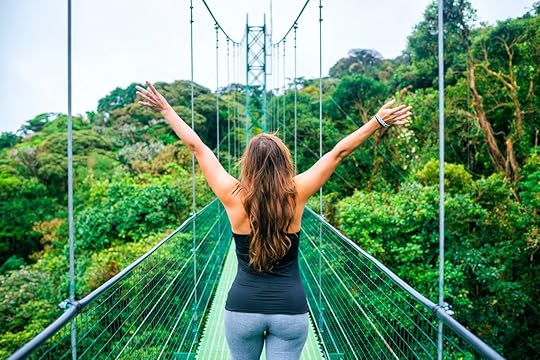
This week Costa Rica is removing all COVID-19 test requirements for entry, which were previously required for US citizens since August 2020. The country initially adopted a state-by-state approach to reopening, only allowing those from low-transmission states and with a negative COVID-19 test to enter. Costa Rica broadened this list of states gradually since August and will now be dropping the testing requirement completely.
Under the new protocol, visitors will have to fill out an online health form and purchase travel insurance covering accommodation and medical expenses in case quarantine becomes necessary. The new rules come as Costa Rica prepares to open its borders to international visitors next week, including all US citizens. The reopening measures line up nicely with Costa Rica’s typical “high season,” which runs from November to May.
According to tourism minister Gustavo Segura, “A tourist visiting the country activates a series of productive chains, such as agriculture, fishing, commerce, transport, tourism guides, hotels, restaurants, operators, artisans – and in looking that, we must focus to continue with the reactivation, safeguarding sanitary measures against COVID-19.”
Hotels will be open at 100 percent capacity and restaurants and bars at 50 percent. The country’s goal is to create 80,000 new tourism jobs by 2021. 
More like thisOutdoorThe Osa Peninsula is Costa Rica’s last wild frontier
The post Costa Rica is dropping its COVID-19 test requirement appeared first on Matador Network.

Brown Folks Fishing launches
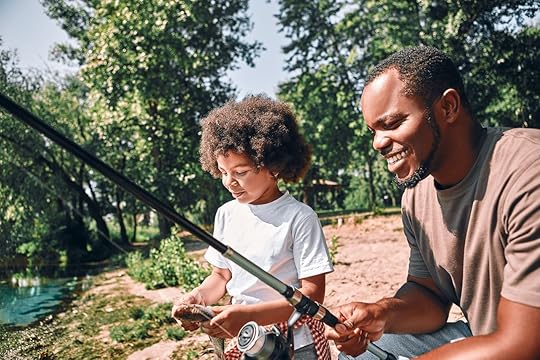
The 2020 trend has been to head outdoors to pursue enjoyable activities at a safe distance from others. Like hiking and camping, fishing has skyrocketed in popularity — with over three million new anglers added this year. For advocacy groups like Brown Folks Fishing, the growing number of BIPOC anglers is an opportunity to increase inclusivity in the outdoor space. We take a look at the status of fishing in the US and how BIPOC anglers, outdoor brands, and activists are working to promote diversity and conservation across the sport.
Women and BIPOC anglers are on the rise
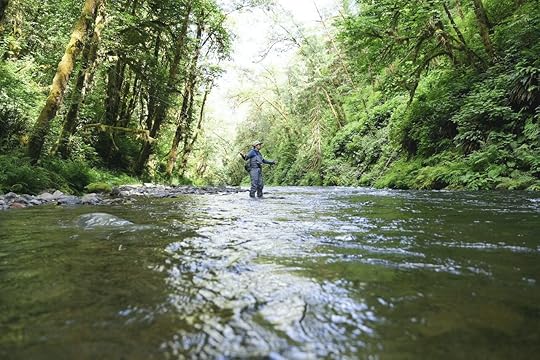
Photo: Tracy Nguyen-Chung
Fishing is experiencing a boom, and not solely among the limited demographic of older white men who have until recently been marketed, inaccurately, as the face of fishing. A Special Report on Fishing by the Recreational Boating and Fishing Foundation and the Outdoor Foundation found that 36 percent of anglers in 2019 were women, a closer step to gender parity in fishing than the annual report had ever found.
Moreover, only 39 percent of participants were over the age of 45. Even the millennial generation, known for its short attention span and tendency toward more fast-paced recreation, made up nearly one-fifth of all anglers. Representing an even bigger percentage of the total, or over 20 percent, are BIPOC anglers.
“We know Black, Indigenous, and people of color (BIPOC) historically have deep roots in fishing that are both cultural and recreational,” Tracy Nguyen-Chung, founder of Brown Folks Fishing, told Matador. “And in certain regions and specific types of fishing, can be quite visible and prominent. We also know BIPOC are a growing demographic in sport fishing.”
Yet, despite that fact that this year the cover of the special report featured Black, Latinx, and white female anglers fishing together on a pier, the industry has largely failed to reflect the sport’s diversity. “It is clear with a glance at all levels of the sport fishing industry — everywhere from boards, guides, staff, marketing, communications — that BIPOC communities at-large are grossly underrepresented,” said Nguyen-Chung. “There are systemic and structural factors at play here.”
The issues, Nguyen-Cung said, touch all aspects of recreational fishing. “Sport fishing isn’t alone in this. According to the last several Outdoor Recreation reports, all non-white groups have either stagnated or declined in participation in fly fishing. This comes at a moment when fly fishing is enjoying a resurgence in popularity.”
Finding a calling through the sport of fishing
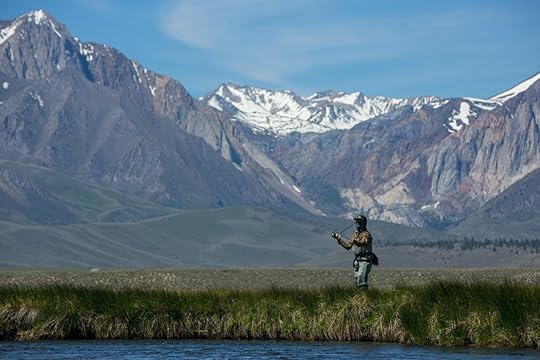
Photo: Matty Wong
Angelica Talan is proof that the movement is spreading. Talan is Diversity & Social Media Liaison for United Women on the Fly, an organization with chapters of women around the country that supports women’s participation in an activity that has traditionally been seen as a male sport.
Talan, who is half-Mexican, half-Black, grew up fishing traditionally but started fly-fishing two years ago when her then-10-year-old daughter wanted to try it. She fell in love with the sport, but noticed an absence of representation.
“What I was finding here in the Washington, DC, area, no matter where I go it’s pretty much a male dominated sport,” Talan told Matador. Even when she did find other anglers in the water or through the organization, those women didn’t look like Talan or her daughter.
After only a short period of time fishing with her daughter, Talan felt she needed to find and amplify more female, BIPOC anglers for her daughter to look up to. “She was looking for inspiration; she was looking to see where she belonged or who belonged in this sport,” Talan said. “And at that moment…there was something triggered in me when I was like ‘I want to connect with other BIPOC anglers and I want to make a difference somehow.’”
Through United Women on the Fly, Talan is working to identify and support female, BIPOC anglers to help them connect with others, and to use their passion to inspire a new generation of diverse anglers.
“I feel like a lot of the lady anglers of color have wanted to get out there and explore but they have been held back…What I’m hearing through my social media networks is that they don’t have anyone to look up to represent them, so all of the sudden they start feeling insecure and thinking maybe it’s not for them,” said Talan. “So my goal in being part of United Women on the Fly is definitely to change that, so that they can see themselves represented and not just in social media and not just in traditional media but in real life.”
Particularly in fly-fishing, where a first-timer might need to shell out over $1,000 just to get into the sport, access is an issue. “People are being priced out,” Talan said, adding that making the sport more financially feasible will be part of her effort to make it more diverse, and she has found the brands open to this.
“Orvis, I think, is really doing their part,” said Talan. “I found that they’re doing their part to try to make it more affordable as a sport.”
Brown Folks Fishing launches Angling for All Pledge
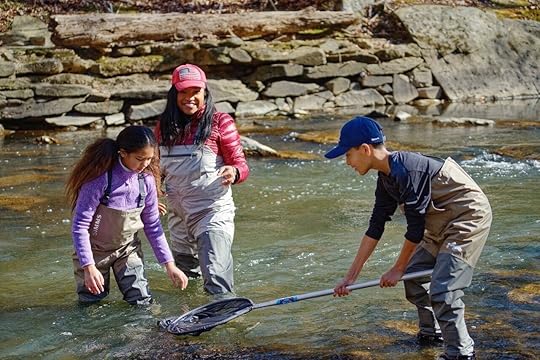
Photo: Albert Ting
The work of United Women on the Fly and the broader shift in the perception of who is fishing and why is aided by advocacy organizations like Brown Folks Fishing. Nguyen-Chung founded the organization in 2018 to showcase BIPOC anglers. Brown Folks Fishing publicizes its advocacy efforts via its Instagram page and recently launched the Angling for All Pledge, seeking to address inequality in fishing and develop a framework of anglers and brands working to support fishing access for underrepresented groups.
“We believe the crises of racism and climate change are deeply intertwined, so the solutions should be as well,” Nguyen-Chung said. “There are two core goals of the pledge: to establish a benchmark for learning and a commitment to addressing racism and inequality in fishing and its industry; [and] to advance an intersectional vision across the fishing and related conservation community that is rooted in anti-racism, justice, equity, liberation, inclusion, resilience, and solidarity.”
Nguyen-Chung and her partners see diverse representation in outdoor sports as a part of the larger conversation about conservation. A major hurdle the group aims to address is the modern systemic assumptions that keep many would-be anglers from taking part in an activity that has historically crossed racial and societal boundaries.
“Tracy and the ambassador team found ourselves asking, ‘How can we get more BIPOC into conservation by using fishing as a gateway?’ said Erica Nelson, co-founder at REAL Consulting and a member of Brown Folks Fishing.
Nelson sees the ties between diverse representation in the fishing community and an increased drive toward sustainability across the sport at large. She notes that Angling for All is “creating deeper relationships with the fishing industry and BIPOC to ultimately protect lands, clean water, increase access and representation. We are also creating a directory that our team recommends to find a guide, instructors, experiences, shops, brands, and organizations from across the industry.”
Brands signing onto the pledge
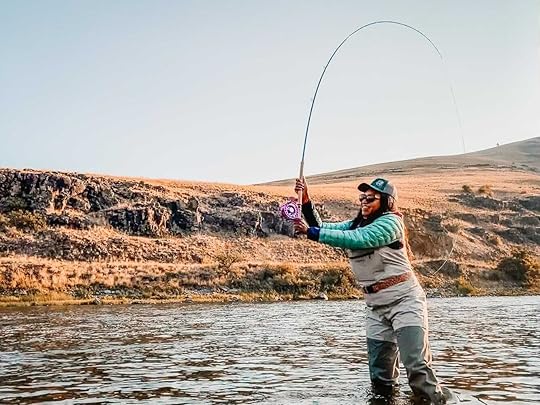
Photo: Heather Hodson
In July, fishing and outdoor gear company Orvis became the first brand to sign onto the Angling for All Pledge. United Women on the Fly has since signed on, as has Patagonia and Casting for Recovery. The pledge commits signees to completing an education curriculum surrounding inclusivity and diversity in fishing; it then requires companies to outline and enact a plan of action upon completion of the training.
“We believe that the outdoors is meant for everyone, but when listening to people, we heard that not everyone sees these spaces as accessible, inviting, or even safe,” Simon Perkins, Orvis president, told Matador.
“This pledge offers the opportunity for us to recognize our blind spots unconscious biases, and to take positive steps as an organization to build a stronger and more inclusive community through increased access, resources and visibility,” added Perkins.
The hope is that more gear companies, guiding outfitters, and other major players in the angling world will commit to increasing diversity and making all feel welcome when casting a line, whether off a boat or while standing in a stream. Once obtaining the education and developing a plan for action, it’s up to the pledgers to create change in the way they best see fit.
“We believe that it is our responsibility as a committed member of the outdoor and fly-fishing communities to do this internal work if change is going to happen,” Perkins said. 
More like thisCultureIndigenous fishing rights in the Pacific Northwest are being threatened
The post BIPOC anglers take a stand for inclusivity in fishing appeared first on Matador Network.

October 26, 2020
Kazakhstan is embracing Borat
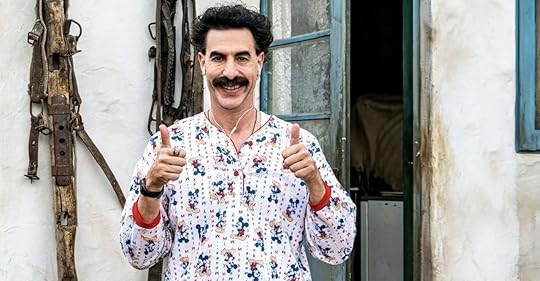
Unfortunately, most Americans’ conception of Kazakhstan comes primarily from the Sacha Baron Cohen movie Borat, which was released in 2006. The movie starred a wacky TV reporter visiting the US and getting into hilarious real-life situations often based on a hyperbolic portrayal of Khazak culture. The film was a sensation, but Kazakhstan itself wasn’t exactly thrilled with its portrayal. It was actually banned in Kazakhstan, and the government filed several lawsuits against Cohen.
According to the New York Times, Kairat Sadvakassov, the deputy chairman of Khazakstan’s tourism board, said, “The decision was made to let it die its natural death and not respond.”
Fast forward 14 years to the release of Borat 2, and it’s a completely different story. Now the government and tourism industry are being more lenient. Thanks to globalization, availability of information, and proliferation of English in Kazakhstan, Kazakh citizens are believed to be more in on the joke this time.
Dennis Keen, a former exchange student to Kazakhstan, eventually moved there permanently and started a business giving walking tours of Almaty, and hosts a travel show on the state TV channel. When Keen learned about the sequel, he thought it could be the perfect opportunity to revive tourism in the wake of the COVID-19 pandemic. “I just had a baby,” Keen told the Times. “When he grows up, I don’t want him to be ashamed of Borat. I want him to say, ‘That’s when my dad started this whole fun project.’”
That’s why Keen and a friend pitched the board of tourism on producing short video spots featuring people walking around Kazakhstan and saying Borat’s signature catchphrase: “Very nice!”
The movie also came out at an opportune time, when no destinations want to actually spend money on tourism promotion.
According to Sadvakassov, “In COVID times, when tourism spending is on hold, it was good to see the country mentioned in the media. Not in the nicest way, but it’s good to be out there. We would love to work with Cohen, or maybe even have him film here.”
A change of heart, indeed. 
More like thisMovies9 movies filmed in Hawaii that will make you want to travel there
The post This time around, Kazakhstan is actually embracing Borat appeared first on Matador Network.

Winter wellness vacations in the US
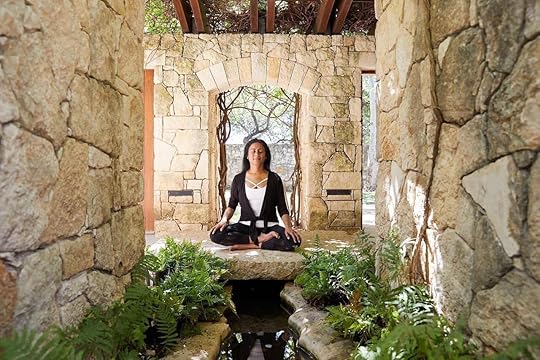
It’s an understatement to say that this year has been rough. We have all experienced differing degrees of anxiety and stress, loss, and general uncertainty, and for some, the holidays will not provide the comfort of being able to be with family and loved ones for all. If this is the case for you, giving yourself the gift of self-care is all the more important. We’ve pulled together some of the most indulgent wellness packages in the US — from day spas to full week retreats. If you are in need to unwind and renew over the holidays, here are some of the best wellness resorts in the US.
1. CIVANA Wellness Resort and Spa — Carefree, Arizona
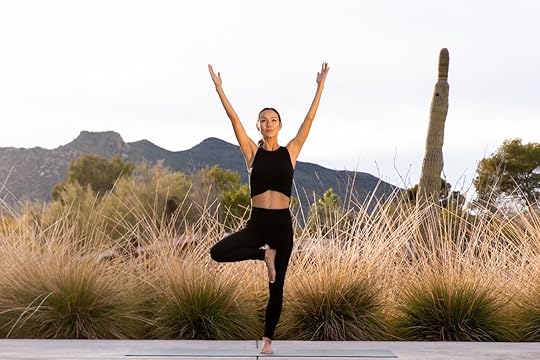
Photo: Civana Wellness Resort and Spa/Facebook
Located in Carefree, Arizona, CIVANA Wellness Resort and Spa is currently one of the nation’s best wellness centers mainly due to its holistic approach and affordability — which we love! Making the option of a health and wellness vacation open to more travelers is where it’s at, and their flexi rate includes a huge range of activities and options. The weekly schedule is packed from 7:00 AM with various local hiking treks, almost every yoga style you could list — including aerial — personal growth workshops, meditation, sound healing, and Barre classes, to list a few.
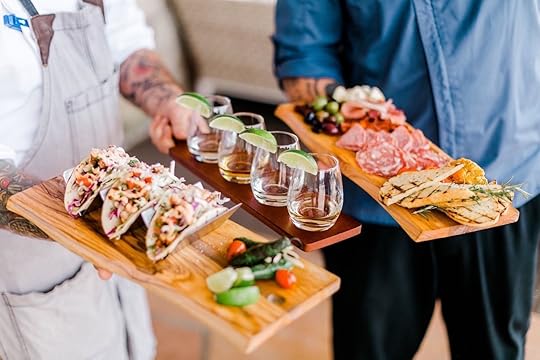
Photo: Civana Wellness Resort and Spa/Facebook
The resort is located in the Sonoran Desert — a landscape that is calming in itself, and the accommodations are chic and modern with soft greens accenting the cleansing white of the walls and furnishings. A queen room starts around $349/night, and with that you get access to the activity schedule, but if you do have the means and want to include a spa package, you can tailor-make the experience.
The spa is “inspired by water” and draws on ancient healing practices such as a hydrotherapy thermal circuit of hot and cold pools and the cool-water shower. The selection of massage options makes a creative menu, and they offer an additional CBD massage booster for $25 if you are in need of extra relaxation.
2. Ten Thousand Waves — Santa Fe, New Mexico
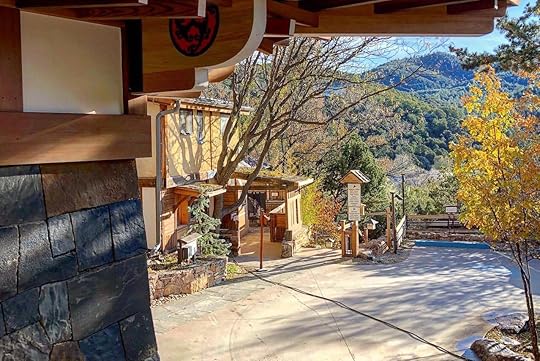
Photo: Ten Thousand Waves Japanese Spa & Resort/Facebook
Set in the foothills of the Sangre de Christo Mountains, four miles from the center of Santa Fe, Ten Thousand Waves setting is calming and reminiscent of the countryside of Japan. Their campus extends over 20 acres and the spa, lodging, and dining options have been inspired by Japanese culture — specifically the practice of bathing in onsen hot springs. The property has been built with imported timber and authentic artwork and fabrics detail the interior while the exterior has been designed around small wooden bridges lined with lanterns and koi ponds. Their 14 rooms resemble a Japanese village, and each room has its own personal courtyard or patio.
The communal hot tubs are segregated by gender and have a sauna and a cold plunge pool. Communal pools are currently not available due to the pandemic, but there are four private tubs. There is an attractive and extensive menu of authentic Japanese spa treatments, such as their Ashi Anima Foot Treatment, which uses pressure work through the feet coupled with a full body massage.
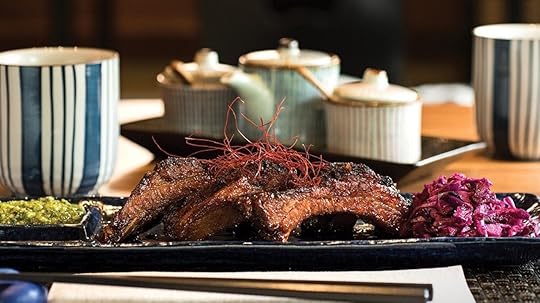
Photo: Ten Thousand Waves Japanese Spa & Resort/Facebook
The onsite restaurant, Izanami, is award-winning. The traditional small plates and sake are simple, but each element from the in-house pickles and ice cream to locally sourced meat and fish is meticulously thought out.
Ten Thousand Waves has a range of packages to choose from and gift certificates. They ask for a minimum stay of two nights unless you are a previous guest.
3. Miraval Austin Wellness Resort and Spa — Austin, Texas

Photo: Miraval Resorts/Facebook
Overlooking Lake Travis, Miraval is set into the forested hills of Balcones Canyonlands Preserve and describes itself as a “natural sanctuary.” This Miraval project is vast, but don’t let that put you off. They have cultivated a sense of tranquility and airiness through their renovation, featuring 116 country-style rooms, many of which have private balconies with views of the lake.
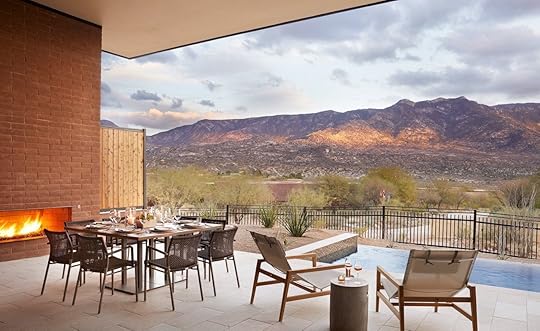
Photo: Miraval Resorts/Facebook
A stay here is not cheap but the facilities are world-class, and the amenities are almost too much. The Holiday Sale is running until October 27 with vacation options until December 31, and it promises festive experiences that will “renew your spirit, and set your intention for a new year filled with balance and hope.” Onsite you’ll find 30 treatment rooms and over 75 treatments at the spa. There’s also wellness counseling, classes in creative expression, water sports, an outdoor challenge course, yoga, and other state-of-the-art fitness options, plus an onsite farm.
4. Blackberry Mountain — Walland, Tennessee

Photo: Blackberry Mountain/Facebook
Booking a stay at Blackberry Mountain is not done on a whim. Their accommodation options are vast — cabins, cottages, and multi-bedroom homes — and often book up in advance. A retreat here in the Smokey Mountains would be one heck of an end-of-year treat.
Blackberry Mountain has dedicated 2,800 acres of land to conservation which has created a private preserve offering out of this world views over Miller’s Cove in Walland. Their blend of outdoor adventure and gold standard wellness facilities marries beautifully and makes for an unforgettable experience.

Photo: Blackberry Mountain/Facebook
Fitness classes are extensive from well-being experiences such as yoga, meditation, and sound bathing to high-intensity workouts in their spin studio. If you are feeling creative, there are classes in ceramics and pottery, painting and sketching, basket weaving and textile art. With their 5,200 acres of land, hiking is ample as is biking, climbing, and trail running. They also offer excursions for those who are interested in pursuits such as fly fishing or horseback riding.
You’d be remiss not to sign up for all of the activities on offer; this is not the place you spend your hard-earned money and sit by the pool. But with that being said, their spa Nest has everything you would expect from a top-end resort, such as an indulgent kaolin clay wrap, an echinacea herbal buff, a varied list of massages, and crystal reiki.
5. Mii amo — Sedona, Arizona
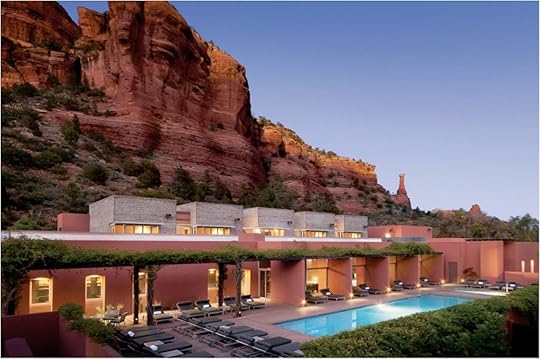
Photo: Mii amo/Facebook
Mii amo spa has some of the most gifted therapists in the world. You come here if you are looking for more than a massage — it is renowned for helping guests refresh and transform mind and body in profound ways. Set with a backdrop of red rock stone of remote Boynton Canyon in Sedona, the wellness center is steps from Enchantment Resort.

Photo: Mii amo/Facebook
Unlike many of the other vacation options mentioned, Mii amo caters to those who are specifically looking for a wellness package. They have a selection of custom-designed 3-,4-, and 7-night “journeys” in which your guide will build you an itinerary depending on what your mind and body needs.
Within this all-inclusive experience, you receive a welcome tour, daily spa credit, dining at their exceptional cafe and juice bar, and access to all classes, seminars, and activities at the resort. The spa treatments are extensive, including two unique treatments called “Spirit of the New Moon: Manifesting” and “Spirit of the Full Moon: Releasing,” which claim to use the power of the moon to release bad energy and set intentions for the future.
6. Lake Austin Spa Resort — Austin, Texas
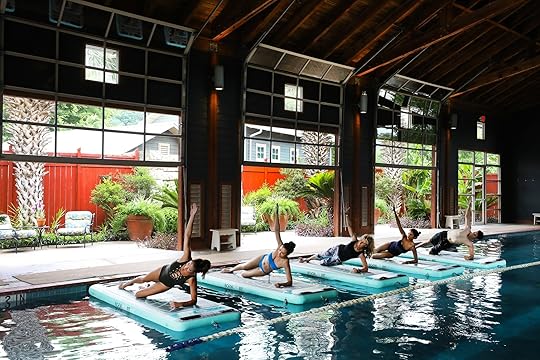
Photo: Lake Austin Spa Resort/Facebook
This property sits on 19 acres of manicured private land on the shore side of Lake Austin. Lake Austin Spa Resort is another resort at the top end of the market and has won awards for being the nation’s best destination spa resort. They have a few deals available which might take the edge off. There’s quite a range, and it might be worth calling the resort directly to see what they can work out. Currently, they are advertising their Spa Refresher Package, which gives you $175 per night towards activities and the spa, and the Stay Longer Stay Free package, which will gift you two extra nights when you book in for five nights and three if you book a full week.

Photo: Lake Austin Spa Resort/Facebook
Throughout the property, the French country decor is elegant yet comfortable and welcoming. Well-appointed rooms are draped with rich fabrics and beautiful artwork and offer a view over the lawns and down to the lake. Their outdoor fitness program is centered in and around the water with activities such as nature bathing, wakeboarding, SUPing, a boat dock boot camp, and water skiing. The Lakehouse Spa is open to day guests, and being only 30 minutes from Austin, you could opt to make your own retreat if staying at the resort is too expensive. The spa itself is beautifully sprawling and has over 100 treatments to choose from. The onsite gardens provide herbs for treatments and are used in their signature Gifts of our Garden scrub.
7. Cal-a-Vie — Vista, California
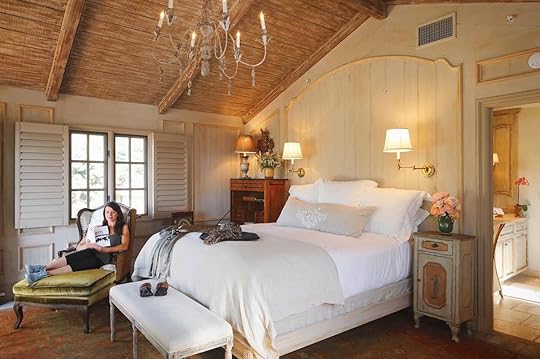
Photo: Cal-a-Vie Health Spa/Facebook
Cal-a-Vie is a favorite of celebrities, but during the holidays, they run some special packages that might make staying here less of a fantasy. They are running a special Celebration Savings this year valid between November 22 and December 20, which offers savings up to $1,000. They also have introductory packages for those who have not stayed before and discounted rates for groups of six or more. Cal-a-Vie told Matador Network that the group package will hopefully see “families and friends who want to ‘re-unite’ at Cal-a-Vie [do so] in a safe way.”
You would be forgiven if, after looking at photos of the property and its grounds, you thought this opulent resort was located in Provence. Private villas look out over rolling hillsides of lavender and vineyards, while luxurious classic French style runs throughout, from its architecture to soft furnishing details.
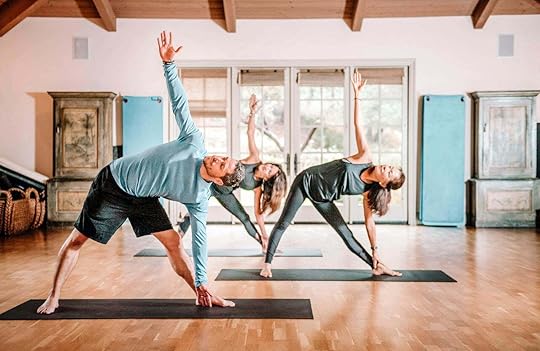
Photo: Cal-a-Vie Health Spa/Facebook
The rates are all-inclusive, and they include transfers from the airport, accommodation, dining with ingredients from the on-site organic garden, unlimited access to fitness facilities and classes, and spa treatments galore. The spa at Cal-a-Vie has been named one of the best spas in the world — and for good reason. Highlights include their signature custom-crafted vinotherapy treatments straight from Cal-a-Vie’s vineyards and their lime blossom waterless scrub which sounds divine. 
More like thisWellnessWhat Nordic countries can teach us about combating seasonal depression
The post This holiday season, gift yourself a break at one of the best wellness resorts in the US appeared first on Matador Network.

Japan pledges carbon neutrality
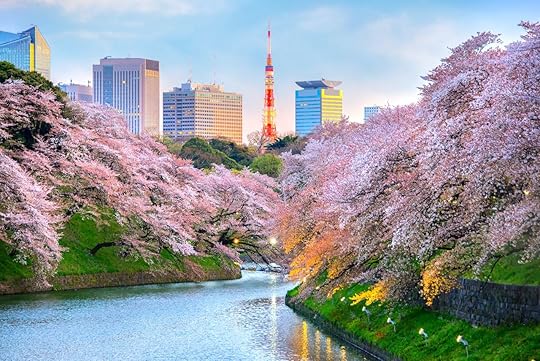
Japan has set an ambitious goal of becoming completely carbon neutral by 2050. The world’s third-biggest economy has increasingly come under pressure to make more forceful commitments to climate initiatives after initially promising just an 80 percent reduction in emissions by 2050, and no specific commitment on total carbon neutrality.
Japan’s prime minister Yoshihide Suga said in an address to parliament, “Responding to climate change is no longer a constraint on economic growth. We need to change our thinking to the view that taking assertive measures against climate change will lead to changes in industrial structure and the economy that will bring about growth.”
Despite these promises, there are lingering doubts about Japan’s ability to actually deliver given its reliance on coal and other fossil fuels. Details have yet been provided on how the country will reduce emissions to zero, though it has pledged to prioritize renewable and nuclear energy. Suga also vowed to expedite research and development on solar batteries and carbon recycling, and change Japan’s reliance on coal energy.
Greenpeace Japan hailed the announcement as good news. According to The Guardian, Sam Annesley, the group’s executive director, said in a statement, “If we are to achieve net zero by 2050, we must massively increase Japan’s renewable energy capacity, with a target of 50 percent renewable electricity by 2030. Anything less than 50 percent and Japan risks falling short of net zero, and more importantly risks driving the world above 1.5 degrees as per the Paris climate agreement.” 
More like thisNewsThere’s a new way to ensure your clothing and travel gear is sustainable
The post Japan pledges to become completely carbon neutral by 2050 appeared first on Matador Network.

Matador Network's Blog
- Matador Network's profile
- 6 followers



